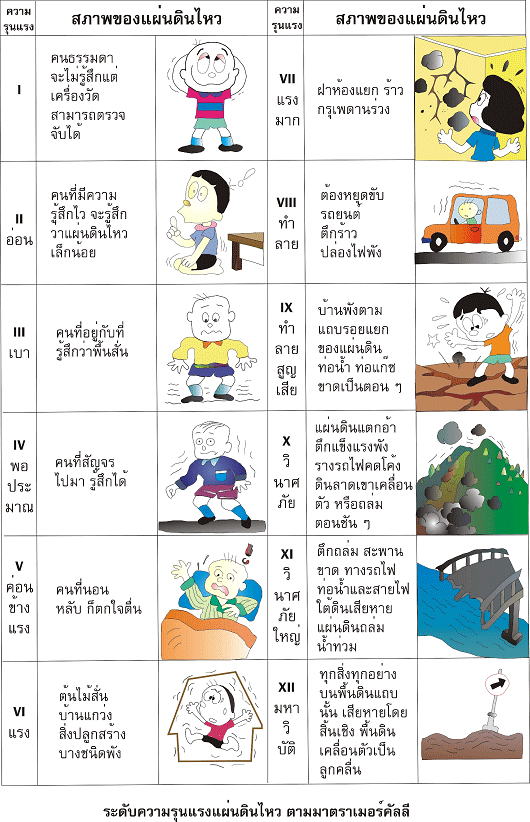General Information on Earthquakes
Earthquakes are seismic events caused by the sudden release of energy built up in the Earth's crust in order to maintain balance between the tectonic plates.
Causes of earthquakes
There are two major causes of earthquakes. The first is human action, such as atomic bomb tests, the storage of large amounts of water in a dam, or explosions in a mining operation. The second and most frequent cause of earthquakes is the natural movement of tectonic plates or magma within volcanoes. Additionally, there are two other widely accepted theories regarding the geological mechanics of earthquakes: Dilation source theory proposes that an earthquake is caused by the sudden build-up of stress in the Earth's crust, leading to an equally sudden release of energy as seismic waves. Elastic rebound theory proposes that earthquakes are caused by movements of faults in the surface of the Earth, which gradually build up stress. Once the rocks accumulate energy to the breaking point, they are suddenly and drastically deformed, leading to a release of seismic waves before returning to their original shape.
Severity of earthquakes
The power of an earthquake can be measured in magnitude and intensity - two entirely different measurements that are often mistaken for one another. Magnitude is the measurement of energy released from the earthquake's hypocenter. This value varies directly with the quake's amplitude, which can be measured using a seismometer and multiplied with a distance correction factor to obtain the magnitude. Thus, each earthquake will only have one magnitude value. The magnitude is measured using the Richter scale, which assigns numbers to quantify the amount of released energy to allow for easy comparison and understanding of the scale of each tremor. It must be noted that the magnitude does not indicate degree of damage caused by the quake. Intensity is the measurement of the earthquake’s impact on the senses and damage caused to various structures and the natural environment. Intensity naturally varies in each location and is determined by factors like distance from the epicenter and geological features. Intensity can be gauged by observing the response of people, the movement of household furniture and various items, damage done to chimneys, or even downright devastation of large buildings. The Modified Mercalli Intensity (MSI) scale is used to classify intensity into 12 separate levels designated by Roman numerals, ranging from minuscule tremors that have to be detected using specialized equipment to destruction of everything in the vicinity.
|
Intensity |
Effects |
|
I - Instrumental |
Not felt by people, but detectable with instruments |
|
II - Weak |
Felt by some sensitive people |
|
III - Slight |
People standing still may feel the ground shake |
|
IV - Moderate |
Felt by people walking/commuting |
|
V – Rather strong |
People sleeping may be jolted awake |
|
VI - Strong |
Trees and houses shake, some weak structures collapse |
|
VII – Very strong |
Cracks appear in walls, dust falls from ceilings |
|
VIII - Destructive |
Vehicles are forced to stop, buildings damaged, chimneys destroyed |
|
IX - Violent |
Buildings on cracks in the Earth’s surface collapse, water and gas pipes broken up |
|
X - Intense |
Cracks appear in the ground, strong buildings collapse, railroads bent out of shape, landslides on hills and mountains |
|
XI - Extreme |
Buildings and bridges collapse, railroads and underground power cables damaged, major landslides, floods |
|
XII - Cataclysmic |
Total devastation in affected area, ground moves in waves |
 |
Source: Documents on ecological disasters, Department of Mineral Resources (http://www.dmr.go.th/ewt_news.php?nid=6814)

